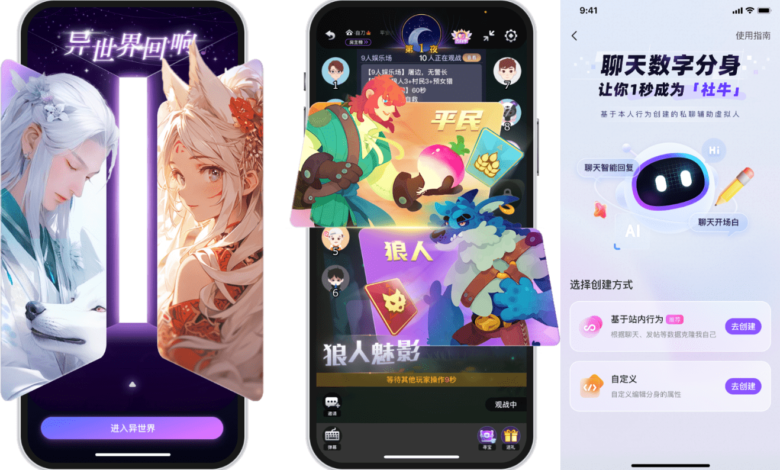Soul App is Chasing Emotionally Intelligent Artificial Intelligence

At a recent event, Che Bin, the VP of Soul App, a very popular social networking platform in China, expressed an industry-wide sentiment when he stated that more than IQ, AIGC applications now need EQ. While he was specifically talking about AIGC applications in the social field, this is currently a requirement cutting through sectorial lines.
When ChatGPT and others like it burst onto the scene, users could not stop marveling at the general intelligence capabilities of these apps. But soon enough the gaffes of this transformative technology were as much the talk of the town as the apps themselves. Many of these errors were pinned on the lack of emotional intelligence in the beginning.
Nobody can deny that the impact of artificial has been radically transformative. The technology has permeated every aspect of the commercial fabric. Businesses of all sizes and from all sectors are falling over each other to harness the power of artificial intelligence and for good reasons. The technology seems to have almost endless potential and the best part is that it can be applied in a multitude of scenarios that transcend the bounds of corporate departments.
But no matter what product or service a business is offering and at what scale, there is simply no step in the commercial juggernaut that does involve interactions with humans. Whether an AI app is designed to help out managers, engineers, designers, or others on the production side or whether the technology is used to power a tool meant to lend support to customers, every task involves communicating with people, and interacting with humans is not just about the actual words but also emotions.
Hence, any tool that cannot understand, interpret, and respond appropriately to human emotions will goof up eventually and that is exactly what happened with many AI applications. It goes without saying that Soul App is certainly not the only company to have realized how this deficiency can turn into the proverbial “Achilles heel” of AI.
Undoubtedly, the need of the hour is artificial intelligence that is more emotionally intelligent. And makers of AI applications for edutech, customer support, digital socialization, and other sectors are all striving to achieve just that. After all, the benefits of integrating emotional intelligence with general intelligence in AI systems are too many and too significant to be discounted.
As Lenovo puts it- Once AI garners the ability to understand and respond to human emotions, it will be able to deliver more personalized and empathetic experiences across various domains. To cite specific examples:
In healthcare, emotional AI can be used to monitor the emotional states of patients, and in turn, this can be used to tailor treatment regimens as well as to provide timely and effective medical interventions.
In edutech, emotional AI can play a role in gauging the student’s response to specific teaching techniques and modalities, and this in turn can be used to tailor learning material to be both more effective and engaging.
In marketing and advertising, emotional AI can help in the creation of targeted and impactful campaigns by analyzing consumer emotional responses.
In customer support, as explained by the cofounder of SelfDisrpt, Daniel Wax, emotional AI can help to make customers feel heard.
In addition to these, emotionally intelligent AI can work wonders for just about every industry out there from entertainment to autonomous vehicles and from gaming to human resources. But the one sector in which the impact of an emotionally intelligent AI model can be truly groundbreaking is social media.
Che Bin of Soul App said it the best when he stated that emotional AI can create “AHA moments” for social platform users by making them realize the true value of an application in terms of the emotional fulfillment it offers. Add to this, the network effect and high traffic value associated with the sector and it is easy to understand why companies like Soul App are chasing emotionally intelligent AI.
Now, this leads to what is probably a billion-dollar question at this time – Is it even possible to have an AI model that can interpret human emotions and respond to them as required?
According to one article in Forbes, using emotionally charged prompts manages to get the attention of the LLM that powers ChatGPT to the point that it tends to answer more accurately in response to them. But, at this time, this is at best an anecdotal observation.
However, more than a realistic glimmer of hope has been offered to those awaiting the advent of emotionally intelligent LLMs by Soul App’s recent victory at MER24. To understand why the social platform’s submission was important, it is imperative to know what emotional intelligence entails in terms of machines.
Imbuing AI with emotional intelligence isn’t a straightforward, single-step process, it’s a combination of 4 steps that involve recognizing the emotion, interpreting it, understanding it contextually, and then responding to it.
But human emotions are not just about words, which means that to recognize and interpret emotions, an AI algorithm would need to have multimodal capabilities. Also to interpret and understand these emotions, it would need to be trained on ample data, which certainly isn’t easy to come by. Finally, to respond appropriately to the finer emotional nuances in human interaction, AI would have to be taught about human personalities.
Soul App managed to cover things on two of these 4 fronts. By fine-tuning their EmoVCLIP model, they gave their submission the ability of video emotion recognition. Next, they used a self-training strategy wherein they used pseudo labels to iteratively label unlabeled data which successfully tackled the problem of data paucity and improved the model’s generalization performance.
Finally, the programmers from Soul App used a technique called Modality Dropout to deal with the competitive effects between different modalities, which allowed the model to recognize emotions more accurately.
Apart from Soul App, another company that is currently doing some cutting-edge work on emotionally intelligent AI models is MorphCast. But this organization is primarily focused on video emotion recognition while Soul App is going for multimodal emotion recognition and interpretation.
When it comes to giving an AI model the ability to understand and respond to emotional cues, the Executive Director of Technology Aloha told Forbes that training AI on personality models such as DiSc goes a long way in helping machines understand human behavior. To cut a long story short, a lot of work has to be done before companies realize their dream of creating AI with EQ.
Also, few are pausing to consider the pitfalls of such a technological marvel. According to the Princeton Review, privacy concerns, bias, discrimination, and accountability will be some of the key areas that will need to be addressed to ensure that the technology works as it is intended to.
In other words, several big and small wrinkles will have to be ironed out before human intelligence manages to infuse emotional quotient into artificial intelligence. But, that certainly isn’t going to stop players like Soul App, ChatGpt, X, Microsoft, and of course FAANG from racing toward this coveted goal.



